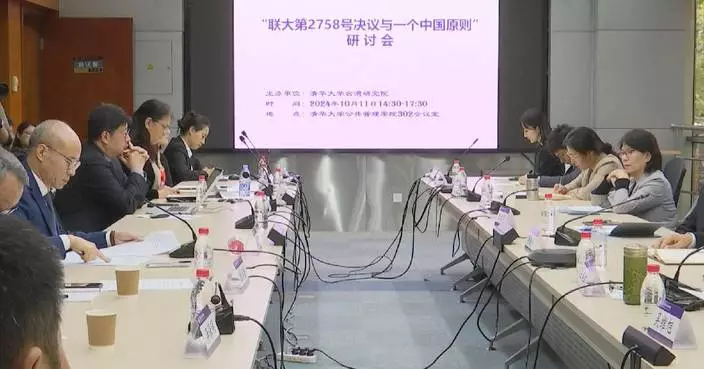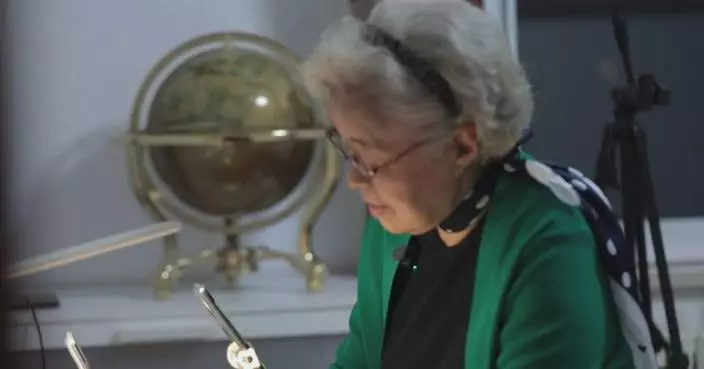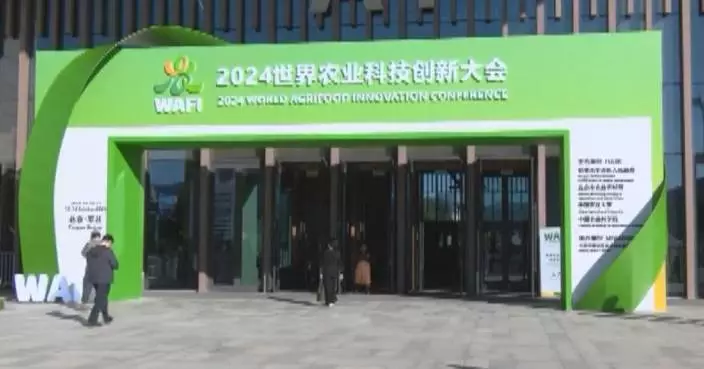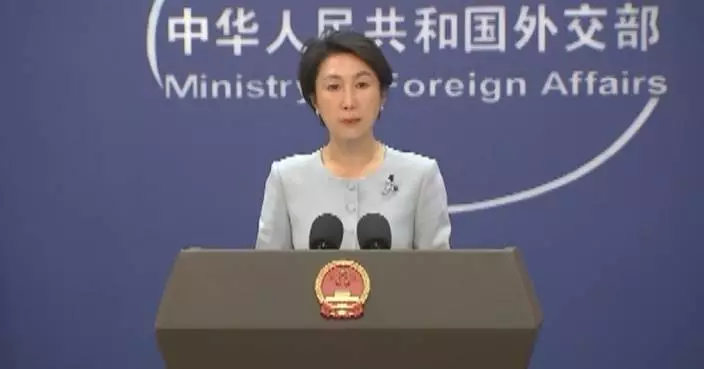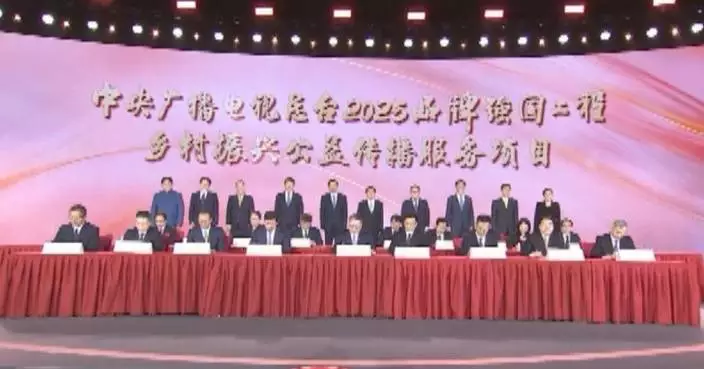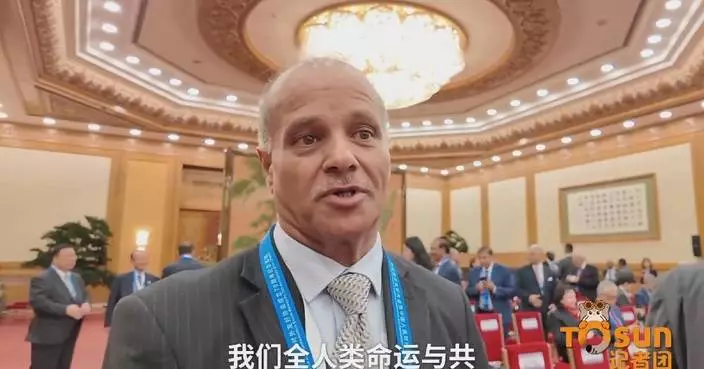Shandong Province, an important region for agriculture and grain production in eastern China, is making great efforts to improve its autumn crop harvest by adopting various technologies and methods, such as improved farming techniques, advanced agricultural equipment, and better crop management practices.
Shandong's grain output has remained above 55 billion kilograms for three consecutive years. Currently, the autumn harvest in the province is in full swing, with more than 80 percent of the autumn grain crops harvested.
"During the critical time for harvesting autumn crops, 18,000 agricultural experts and technicians was regularly assigned to various locations in the province to provide on-site guidance and assistance. Besides, 232 million yuan (about 33 million U.S. dollars) in funding was allocated for agricultural use, like applying specific pesticides across 130 million mu (about 8.7 million hectares) of autumn grain to guarantee a successful harvest," said Chi Fang, an official from Shandong Provincial Department of Agriculture and Rural Affairs.
This year, Shandong has built six key planting areas, 44 demonstration counties, and a number of demonstration fields, all focused on improving unit yields and enhancing grain production across the region.
"The province has allocated 295 million yuan (about 42 million U.S. dollars) for its agricultural projects, focusing on promoting five key technologies designed to increase unit yield of corn. These efforts have shown notable results, with project areas expected to see yield increases of over 10 percent," said Chi.
Shandong has also transformed a large area of saline-alkali land into fertile farmland to enhance grain production. In the past five years, 140,000 mu (about 9,300 hectares) of saline-alkali land in the province has been improved, becoming suitable for cultivation.
Through the method of straw turnover and the use of organic fertilizers, the salinity of soil has been reduced and fertility improved. Additionally, after six years of testing, a high-quality saline-alkali resistant corn variety has been cultivated and promoted among local farmers, yielding an average of over 1,500 kilograms per hectare more than the previous variety.
In the past, corn farmers applied all the fertilizer at the beginning when the corn was planted because it would be difficult to apply fertilizer again when the corn grew tall. However, this practice did not ensure effective fertilizer use throughout the corn's growing period.
"After flooding inundation and rain wash, a large portion of the fertilizer was washed away or sunk deep into the soil, leading to an estimated utilization rate of only about 30 percent," said Li Yanqiang, a local corn farmer.
To address this issue, a new drip irrigation technology was applied in Shandong's Zibo City, delivering a mixture of fertilizer and water through pipelines. This approach has significantly improved corn production, with corn yields on Li's farmland increasing from an initial 700 kilograms to 900 kilograms now.
"This marks a significant change in the fertilization method for corn, effectively solving the issue of nutrient loss during corn's later growth stages and achieving cost-effective yield increases," said Li Guofang, a local agricultural technician.
Nowadays, young farmers in Shandong are adopting modern technology to harvest their crops efficiently. Yang Bin, a local farmer in his twenties with a degree in mechanical engineering, enjoys modifying agricultural vehicles and uses his expertise to assist fellow farmers alongside his teammates.
"I went from part-time to full-time work and became the leader of the 'Zaozhuang agricultural service' team. Besides operating and repairing farm equipment and flying drones, I also take on job requests, assign tasks, and manage the team. It is tiring, but working with my team has greatly expanded our ability to operate in different areas compared to when I was working alone," said Yang.
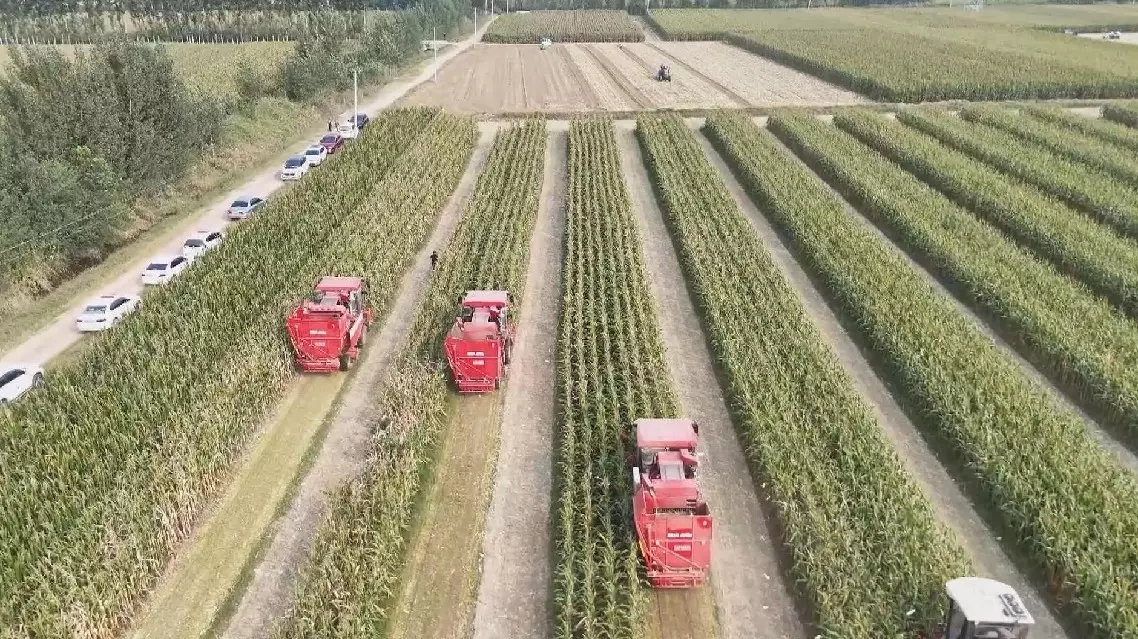
Farmers in Shandong busy with smart-harvesting of autumn crops
The latest separatist remarks by Taiwan region's leader Lai Ching-te have gone against the historical trend, revealing his sinister intention of seeking political self-interest at the risk of undermining peace and stability across the Taiwan Strait, according to a commentary released by the China Media Group(CMG) on Friday.
An edited English-language version of the commentary is as follows:
Since taking office in May, Lai has been peddling the separatist fallacy of "Taiwan independence" in various ways.
In a speech on May 20, upon assuming the role of Taiwan region's leader, Lai presented a new version of the "two states" theory, claiming that the two sides of the Taiwan Strait are "not subordinate" to each other.
Amid the week-long nationwide celebrations of the 75th anniversary of the founding of the People's Republic of China, Lai made comments about the concept of "motherland" during an event in Taipei on Saturday, claiming that "in terms of age, it is impossible for the People's Republic of China to be the motherland of the people of the Republic of China," which sparked criticism from various sectors both on the mainland and in Taiwan.
In a speech delivered in Taipei on Oct. 10, Lai continued to propagate the new "two states" theory and fabricate "Taiwan independence" fallacies, demonstrating his unwavering "Taiwan independence" stance
However, no matter what bizarre theories Lai Ching-te fabricates, they cannot change the objective fact that both sides of the Taiwan Strait belong to one China and that Taiwan is part of China.
The 1943 Cairo Declaration and the 1945 Potsdam Proclamation clearly stipulated that Taiwan, a Chinese territory stolen by Japan, shall be restored to China. This constitutes an important part of the post-World War II international order and also lays the legal foundation that Taiwan is inalienable territory of China.
Fifty-three years ago, the 26th session of the U.N. General Assembly adopted Resolution 2758 with an overwhelming majority, and decided to restore all the rights of the People's Republic of China in the United Nations and to recognize the representatives of the Government of the People's Republic of China as the only legitimate representatives of China to the United Nations, and immediately expelled the representatives of Taiwan from the United Nations and its affiliated organizations.
Resolution 2758 once and for all resolved the issue of representing the whole of China, including Taiwan, in the UN and made clear that there is no such thing as "two Chinas" or "one China, one Taiwan." There is no gray area or room for ambiguity on this matter of principle.
Under the premise of the one-China principle, China has established diplomatic relations with 183 countries. This fully demonstrates that upholding the one-China principle is an international justice and a reflection of the will of the people and the trend of the times. No matter how the DPP authorities stir things up, they will only face greater failure.
In his speech on Thursday, Lai asked the mainland to "shoulder international responsibilities together with Taiwan," which aimed to position cross-Strait relations as a "relationship between two countries" and justify his "Taiwan independence" fallacy.
Taiwan is China's Taiwan, not the so-called "Taiwan of the world." Where does the saying that China "should shoulder international responsibilities together with Taiwan" come from?
Facts showed that it has been widely recognized in the Taiwan region that Lai Ching-te's pursuit of "independence" and provocation is the root cause of unrest and instability in the Taiwan Strait. It will bring disaster to the people in Taiwan and cause them to miss out on development opportunities.
In September, the Chinese mainland announced that it would stop implementing the policy of exempting import tariffs on 34 agricultural products from Taiwan, effective Sept. 25.
Initially in 2005 and again in 2007, guided by the belief that people on both sides of the Taiwan Strait belong to the same family, the mainland exempted import tariffs on 34 agricultural products from Taiwan, including fresh fruits, vegetables, and seafood. This policy effectively helped these products expand their markets on the mainland, bringing tangible benefits to workers in the island’s agriculture and fishery sectors.
However, since Lai took office as the island's leader, the Taiwan authorities have stubbornly maintained a "Taiwan independence" stance, continuously provoking tensions, escalating cross-Strait hostility, and obstructing exchange and cooperation.
The future of Taiwan lies in China's reunification, and the wellbeing of the people in Taiwan hinges on the rejuvenation of the Chinese nation. No matter what "Taiwan independence" theories Lai Ching-te puts forward, they cannot change the legal status of Taiwan as part of China, or the fact and reality that both sides of the Taiwan Strait belong to one China, nor can they deceive the international community.
Lai and others' provocation for "independence" is doomed to fail. China will surely achieve complete reunification. This is a historical trend that no one or any force can stop.

Lai's pursuit of "Taiwan independence" root cause of instability in Taiwan Strait: commentary




